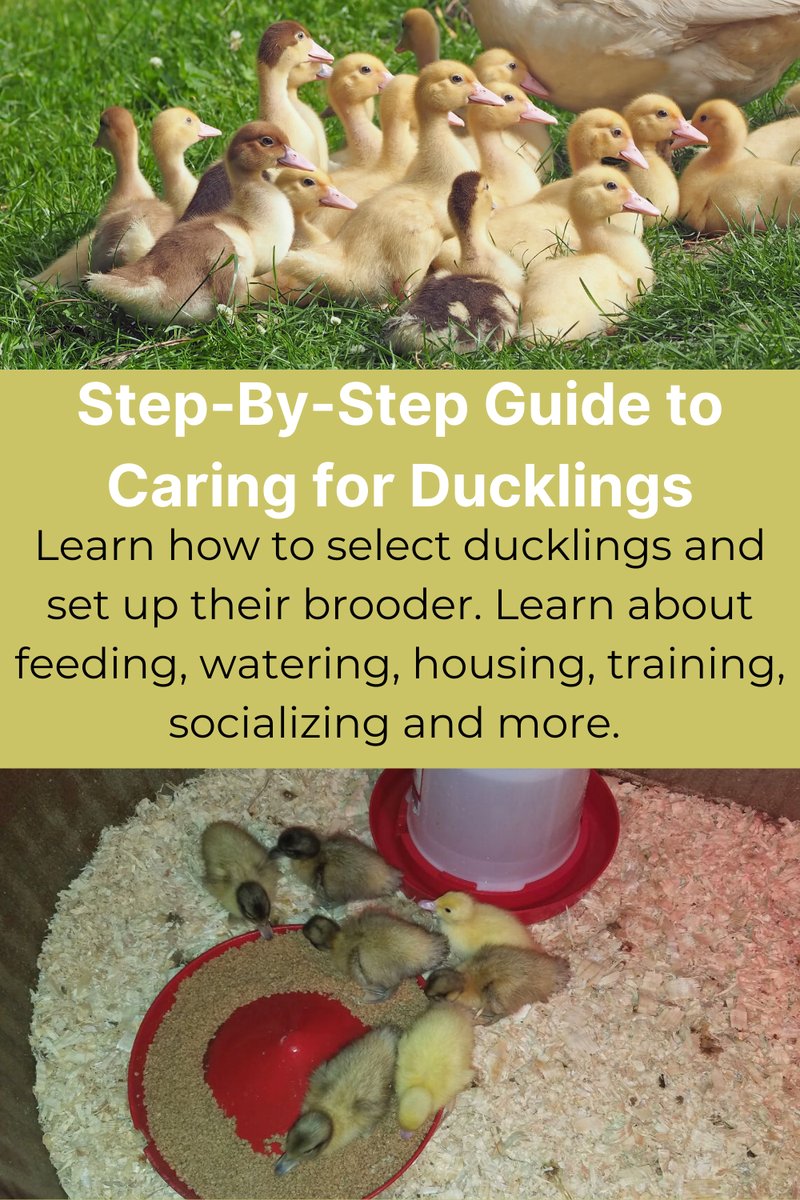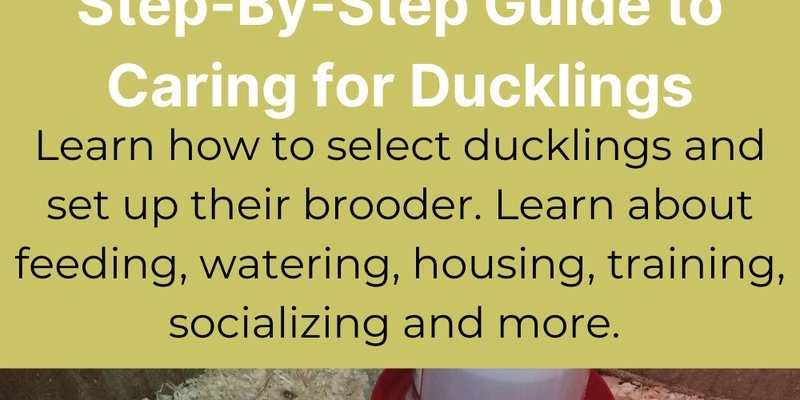
When you’re thinking about starting your journey in duck-keeping, you might feel overwhelmed by the details—like choosing the right brooding setup, feeding them properly, and ensuring they’re safe from harm. Don’t worry! I’m here to share the ins and outs of caring for ducklings, including helpful tips and tricks. Whether you’re a first-time duck parent or just looking to refresh your knowledge, this guide will walk you through everything you need to know.
Setting Up the Brooder
Creating the perfect brooding environment is the first step in duckling care. Imagine a cozy little home where they can rest, eat, and explore. The brooder is basically their nursery, so let’s make it comfy!
Start with a clean, dry space. A large cardboard box or a plastic kiddie pool works great for a smaller number of ducklings. You’ll want to line the bottom with wood shavings or straw, as this keeps things clean and provides some insulation. Make sure there’s enough room for them to move around. Think about it as giving them their own tiny playground!
Next, add a heat lamp. Ducklings need warmth for the first few weeks, so you want to keep the temperature around 90°F (32°C) for the first week. Every week after that, you can reduce the temperature by about 5°F. But how can you tell if they’re too hot or cold? Pay attention to their behavior! If they huddle together under the lamp, they might be chilly. If they’re spread out, they could be feeling too warm. It’s all about watching and adjusting.
Feeding Your Ducklings
What do ducklings eat? That’s a great question! Feeding them properly is key to their growth and development, and it’s one of the joys of duck-keeping.
Start with a high-quality duck starter feed. This is specially formulated and has the right balance of nutrients. You can find it at a feed store or even online. Here’s a tip: avoid using chicken feed, as it can lead to health issues for your ducklings.
Ducklings need to eat frequently. You might think about it like having your favorite snack on hand all day. You can offer the starter feed several times a day, but remember to ensure they have access to fresh water at all times—and not just any water. Ducklings love to dabble, so a shallow dish that allows them to dip their heads is perfect. Just make sure they don’t drown; safety first!
It’s also a good idea to introduce some greens after a few weeks—chopped lettuce, dandelion leaves, or even peas. It’s like adding a little variety to their diet. They’ll love it, and it will help them explore new tastes!
Water Needs for Ducklings
Water is super important for ducklings, not just for drinking, but also for preening their feathers and keeping clean. It’s like giving them a little spa day!
Make sure their water is shallow and doesn’t pose a drowning risk. You can use a small bowl with steep sides or create a DIY waterer that’s easy for them to access. Just remember to change it frequently to keep it fresh. Ducklings can be messy little munchkins, and they’ll probably splash water everywhere, turning their space into a mini pond!
As they grow, you can offer larger water sources, but always supervise the little ones during their water playtime. Think of it as keeping a watchful eye on toddlers splashing in a kiddie pool. It’s fun, but safety is paramount!
Keeping Ducklings Safe
Safety is a top priority when caring for ducklings. Just like you’d child-proof your home for a curious little one, you need to create a safe environment for these fuzzy balls of joy.
First off, escape-proof your brooder. Ducklings are surprisingly good at finding ways to squeeze through small spaces. So, ensure the lid is secure if you’re using a box or pool. Keep them away from drafts, too—they don’t handle cold air well.
Also, be mindful of other pets. Dogs and cats might see them as toys. It’s essential to supervise interactions and keep your ducklings in a secure area. Think of it like managing an energetic playdate, where you want to ensure everyone is safe and happy.
Lastly, watch for signs of illness or distress. If a duckling seems lethargic or isn’t eating, it’s time to seek advice from a vet who knows about birds. Early intervention can make a world of difference.
Socializing and Handling Ducklings
Ducklings are social animals and enjoy companionship. Handling them is vital for their emotional development and helps them become friendly ducks.
Start handling them gently from a young age. It’s like nurturing a bond between friends. Each duckling will have its personality, so some might be more receptive to cuddles than others. Approach them calmly; remember, sudden movements can scare them.
When you’re holding a duckling, support its body gently and let it feel secure in your hands. You might find it fun to let them waddle around in a safe area. This helps them learn to trust you and feel more comfortable being around humans.
Regular interaction will also help you identify any potential health issues. You’ll get to know their usual behaviors and habits, making it easier to spot if something is off.
Understanding Duckling Behavior
Ducklings have some pretty interesting behaviors that can tell you a lot about their needs and well-being. Understanding these can help you care for them more effectively.
When they quack a lot or seem restless, they might be looking for comfort or something to do. Imagine a toddler getting fidgety when they want to play. This is a great cue to engage with them or check if they need food or water. Remember, they thrive on social interaction!
Another behavior to watch for is preening. This means they’re keeping their feathers in good shape, which is crucial for staying warm and dry as they grow. It’s good to know that the more comfortable they feel in their environment, the more likely they are to exhibit healthy behaviors.
Also, don’t forget that ducklings love to explore! They’ll be curious about their surroundings, and giving them space to roam (while keeping it safe) is essential for their development. Providing interesting toys or safe objects can help satisfy their exploration instincts.
Making the Transition to Outdoor Living
As your ducklings grow, the time will come for them to venture outside. Transitioning them to an outdoor space is a big step, and it should be done gradually.
Start by introducing them to the outdoors in a safe, enclosed area. This might be a small pen or a fenced yard where they can feel the grass under their feet and explore nature. Keep an eye on the temperature; they still need a warm place to retreat to.
Once they’re comfortable, you can slowly allow them more freedom to roam in a safe, supervised area. This is where they’ll really enjoy being ducks! They’ll learn to forage, take dust baths, and enjoy the sunshine.
It’s important to remember that outdoor living also requires predator protection. Ensure their space is secure from any potential threats, like raccoons or birds of prey. Think of it as creating a safe playground with a big fence around it!
In conclusion, caring for ducklings is a rewarding experience that requires attention, patience, and a little bit of love. From setting up their cozy brooder to ensuring their safety and well-being, each step is essential to raising healthy, happy ducks. Whether you’re a duck lover or just intrigued by the idea, following these guidelines will help you nurture your little companions as they grow and thrive. So, grab that duck feed and get ready for a delightful adventure with your new feathered friends!

